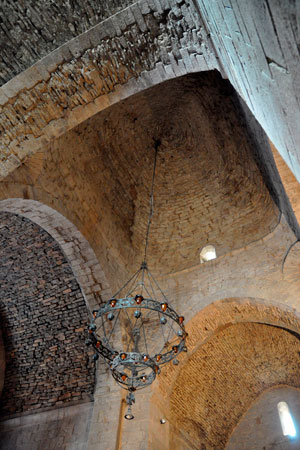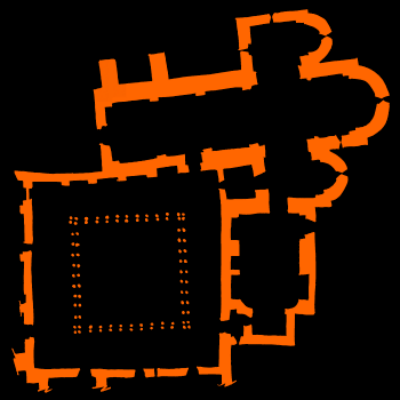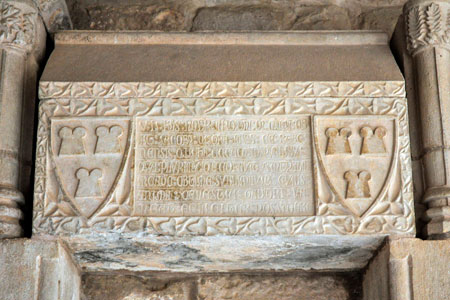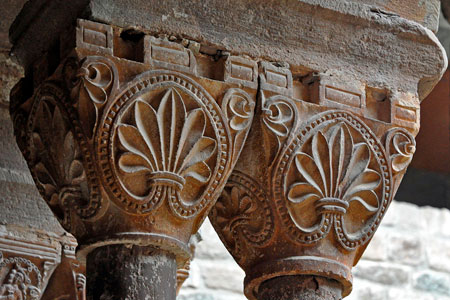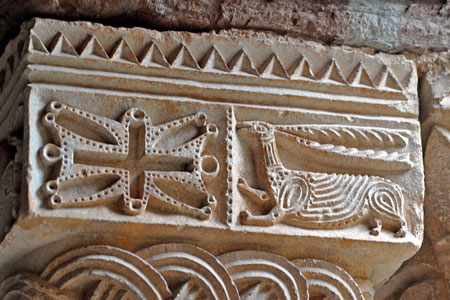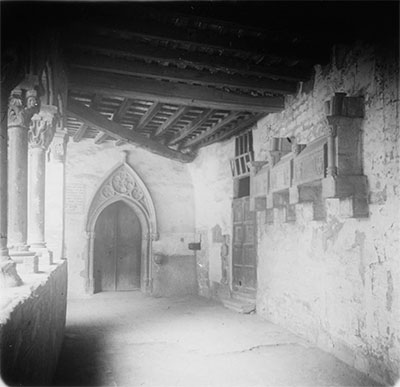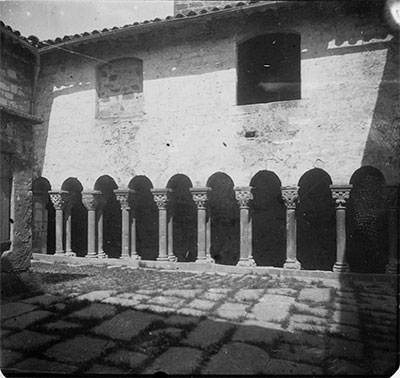Monastery of Santa Maria de l'Estany
Canonry of Santa Maria de l'Estany / Sancte Marie de Stagno
(L'Estany, Moianès)
There is evidence of the existence of a church in this place from the year 990, and like others in this territory, it was the subject of a dispute between the bishopric of Vic and the lords of Gurb. As a result of these disagreements, the church of Santa Maria was handed over to the bishopric in 1080.
That same year, Bishop Berenguer Sunifred de Lluçà promoted the introduction of a community of Augustinian canons, whose members came from the cathedral canonry of Vic, who followed the bishop in his attempts to reform it, something that he was unable to achieve within his community due to strong opposition. The canonry of L'Estany was closely linked to that of Vic Cathedral, and its first known prior was Bernat Compar (or Bompar). Over time, it became increasingly important, both for its influence over other monastic centres in Catalonia and for the goods it received, which spread across a wide territory, especially in Bages and Osona.
This economic situation allowed the canonical community to build a new church, which was consecrated in 1133, and the cloister, between the 12th and 13th centuries. On the other hand, from Santa Maria de l'Estany, the creation or reformation of other communities was promoted, such as Sant Celoni (Vallès Oriental, 1088), Sant Pere dels Arquells (Segarra, 1100), Sant Joan de les Abadesses (Ripollès), Sant Llorenç del Munt (Osona, 1127), Santa Maria de Lluçà (also in Osona, 1192), Santa Maria de Manresa (Bages), Sant Tomàs de Riudeperes (Osona), Santa Maria de Manlleu (Osona), Sant Salvador d'Arraona (Vallès Occidental, 1185), Santa Maria de Caselles (Bages, 1221), among others. In 1264, the canonry obtained the title of abbey, which it had already used sporadically in an earlier period, but which was not continued due to the opposition of the community of Vic.
In 1364, the canonry sold many of its possessions to acquire the Oló estate, which ultimately provoked the opposition of its inhabitants, who managed to raise the necessary capital to buy it back, which aggravated the situation of confrontation that had arisen, to the point that in August 1395 the monastery was attacked and set on fire. The destruction was such, that the community was forced to disperse. This made it easier for the canonry to divide into different factions, in favour of remaining in Manresa or other centres, while the bishop of Vic fought for the return to L'Estany, which he did not achieve until 1436.
The house was in ruins and suffered the effects of the earthquake of 1448, which brought down part of the church. A small community dedicated its efforts to rebuilding the monastic complex, but the economic situation and the effects of being governed since 1467 by commendatory abbots did not facilitate this. The place was secularised in 1592, and the title of collegiate church was maintained until 1775, when it became a parish church.
The architectural ensemble of Santa Maria de l'Estany is made up of the church, the cloister and various outbuildings around the latter, where there is now a museum. Restoration of the complex began at the end of the 19th century, but the most decisive work was carried out from 1931 onwards,mainly affecting the church and the cloister. The church has a single nave and transept. It has a chevet formed by a large central apse (that of the nave) and two smaller apses, open at the transept.
There is a hemispherical dome at the intersection of the transept and the nave. It is worth mentioning that the lateral apses are the result of restoration, and that the same is true of many other elements, such as the vaults. The cloister is practically square in plan, with nine pairs of columns on each side, and four sets of five columns have been arranged at the corners, the result of restoration, since they had been replaced by massive stone pillars. The ensemble is therefore made up of seventy-two capitals, in addition to those located at the corners.
- BESERAN I RAMON, Pere (2000). Revisions i propostes per a l’escultura del claustre de l’Estany. Lambard. Estudis d’art nedieval. Vol. XII. Barcelona: Institut d’Estudis Catalans
- CODINA PUIGSAULENS, Joan (1932). Monestir de Santa Maria de l'Estany. Barcelona: Perfectus
- JUNYENT, Eduard (1971). El monestir i el claustre de Santa Maria de l'Estany. Granollers: Montblanc
- PLADEVALL, Antoni, VIGUÉ, Jordi (1978). El monestir romànic de Santa Maria de l'Estany. Barcelona: Artestudi Ed.
- PLADEVALL. Antoni (1984). Santa Maria de l’Estany. Catalunya romànica. Vol. XI. El Bages. Barcelona: Enciclopèdia Catalana
- SÁNCHEZ, Carles (2015). Fête, musique et amour courtois dans le cloître catalan: Santa Maria de l’Estany et l’héritage occitan. Les Cahiers de Saint-Michel de Cuxa. Le cloître roman. Codalet: Ass. Culturelle de Cuxa
- SUREDA, Marc (2009). Santa Maria de l'Estany. Claustre. Monestir Santa Maria de l’Estany
- Enllaç ↗ : Monestir Santa Maria de l'Estany





